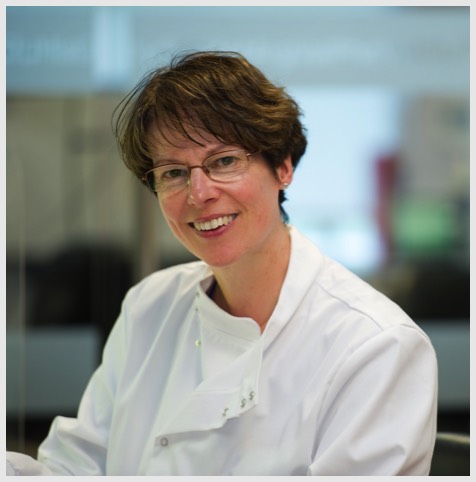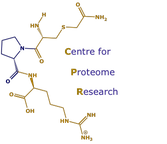
Dr Deborah Simpson
Postdoctoral Researcher
LabA, Centre for Proteome Research
Institute of Integrative Biology
University of Liverpool,
Crown Street
Liverpool L69 7ZB
Tel: +44 151 794 5344
Tel: +44 151 795 4392
Email: dsimpson[at]liv.ac.uk
Postdoctoral Researcher
LabA, Centre for Proteome Research
Institute of Integrative Biology
University of Liverpool,
Crown Street
Liverpool L69 7ZB
Tel: +44 151 794 5344
Tel: +44 151 795 4392
Email: dsimpson[at]liv.ac.uk
I graduated from the University of Salford with a degree in Applied Biochemistry in 1985. During my degree course I had a 12 month industrial placement at Higson’s Brewery in Liverpool. It was an exciting time to be there as a new lager plant was being installed and was commissioned the same year. In addition to the quality control analyses I was involved in the development of a new product.
Following my degree course I was fortunate to be offered a PhD project by the then Dr Rob Beynon to work in his lab on a project funded by the Muscular Dystrophy Group of GB and Northern Ireland. I was awarded my doctorate on’ The Expression of Glycogen Phosphorylase in Normal and Abnormal Mouse Skeletal muscle’ in 1989. The cofactor of the enzyme pyridoxal phosphate was employed as a specific label to measure the rate of degradation of the enzyme in vivo in muscle wasting conditions such as denervation-induced muscle atrophy and muscular dystrophy. Radiolabelled pyridoxine (vitamin B6) was used to label the precursor pool and phosphorylase-bound label was resolved from that associated with other proteins and free label by affinity and size-exclusion chromatography.
My first position as a Research Associate was an MRC-funded project ‘A novel and non-invasive method for measurement of the turnover of muscle glycogen phosphorylase’. This project extended the work of my PhD project and involved the chemical synthesis of stable isotope-labelled vitamin B6 to determine the kinetics of vitamin B6 assimilation and glycogen phosphorylase turnover in individual animals by non-invasive means (urinanalysis) enabling application to both experimental animals and humans. The project involved the implementation of GC/MS into the laboratory and the establishment of protocols for the isolation and derivatisation of urinary vitamin B6 metabolites.
My return to work in 2000 following a career break of eight years coincided with Prof Beynon’s return to Liverpool in the School of Veterinary Science. I once again became a member of Rob’s research group the ‘Protein Function Group’ which was now a proteomics group. Technology had moved on somewhat since I had last been in the lab and it was a steep learning curve to get up to speed. My first position was a 2 year Wellcome Trust funded project in which comparative 2-D gel analysis in conjunction with mass spectrometry was utilised to define the differential response of Cambridge and North Rondaldsay sheep to copper challenge. On this project I had the privilege of working with Dr Susan Haywood, a Veterinary Pathologist with considerable knowledge and expertise on North Rondaldsay sheep.
cont’d…
Following my degree course I was fortunate to be offered a PhD project by the then Dr Rob Beynon to work in his lab on a project funded by the Muscular Dystrophy Group of GB and Northern Ireland. I was awarded my doctorate on’ The Expression of Glycogen Phosphorylase in Normal and Abnormal Mouse Skeletal muscle’ in 1989. The cofactor of the enzyme pyridoxal phosphate was employed as a specific label to measure the rate of degradation of the enzyme in vivo in muscle wasting conditions such as denervation-induced muscle atrophy and muscular dystrophy. Radiolabelled pyridoxine (vitamin B6) was used to label the precursor pool and phosphorylase-bound label was resolved from that associated with other proteins and free label by affinity and size-exclusion chromatography.
My first position as a Research Associate was an MRC-funded project ‘A novel and non-invasive method for measurement of the turnover of muscle glycogen phosphorylase’. This project extended the work of my PhD project and involved the chemical synthesis of stable isotope-labelled vitamin B6 to determine the kinetics of vitamin B6 assimilation and glycogen phosphorylase turnover in individual animals by non-invasive means (urinanalysis) enabling application to both experimental animals and humans. The project involved the implementation of GC/MS into the laboratory and the establishment of protocols for the isolation and derivatisation of urinary vitamin B6 metabolites.
My return to work in 2000 following a career break of eight years coincided with Prof Beynon’s return to Liverpool in the School of Veterinary Science. I once again became a member of Rob’s research group the ‘Protein Function Group’ which was now a proteomics group. Technology had moved on somewhat since I had last been in the lab and it was a steep learning curve to get up to speed. My first position was a 2 year Wellcome Trust funded project in which comparative 2-D gel analysis in conjunction with mass spectrometry was utilised to define the differential response of Cambridge and North Rondaldsay sheep to copper challenge. On this project I had the privilege of working with Dr Susan Haywood, a Veterinary Pathologist with considerable knowledge and expertise on North Rondaldsay sheep.
cont’d…

B.Sc. University of Salford
Ph.D. University of Liverpool
Ph.D. University of Liverpool
cont’d…
Following this project I moved into the realms of quantitative proteomics focussing on the provision of a novel solution to the absolute quantification of proteins using QconCAT technology. Artificial genes consisting of a concatenated series of peptides, QconCATs, are expressed in Ecoli. Two or more peptides act as signature quantification or Q-peptides for one protein enabling multiplexed absolute quantification. Part of this BBSRC-funded project was the design and deployment of a QconCAT for absolute quantification of mouse urinary proteins (MUPs). Building on the success of QconCATs for multiplexed absolute quantification of proteins I was part of a multi-disciplinary project funded by the BBSRC on the dynamics and function of the NF-κB signalling system. For this project I designed and deployed QconCATs to quantify NF-κB proteins and their inhibitors using MRM methodology.
I am currently funded by the Technology Directorate working on a part-time basis. I collaborate with colleagues from other departments within the university and work on a variety of projects where proteomics solutions can be used to answer biological questions.
Following this project I moved into the realms of quantitative proteomics focussing on the provision of a novel solution to the absolute quantification of proteins using QconCAT technology. Artificial genes consisting of a concatenated series of peptides, QconCATs, are expressed in Ecoli. Two or more peptides act as signature quantification or Q-peptides for one protein enabling multiplexed absolute quantification. Part of this BBSRC-funded project was the design and deployment of a QconCAT for absolute quantification of mouse urinary proteins (MUPs). Building on the success of QconCATs for multiplexed absolute quantification of proteins I was part of a multi-disciplinary project funded by the BBSRC on the dynamics and function of the NF-κB signalling system. For this project I designed and deployed QconCATs to quantify NF-κB proteins and their inhibitors using MRM methodology.
I am currently funded by the Technology Directorate working on a part-time basis. I collaborate with colleagues from other departments within the university and work on a variety of projects where proteomics solutions can be used to answer biological questions.
